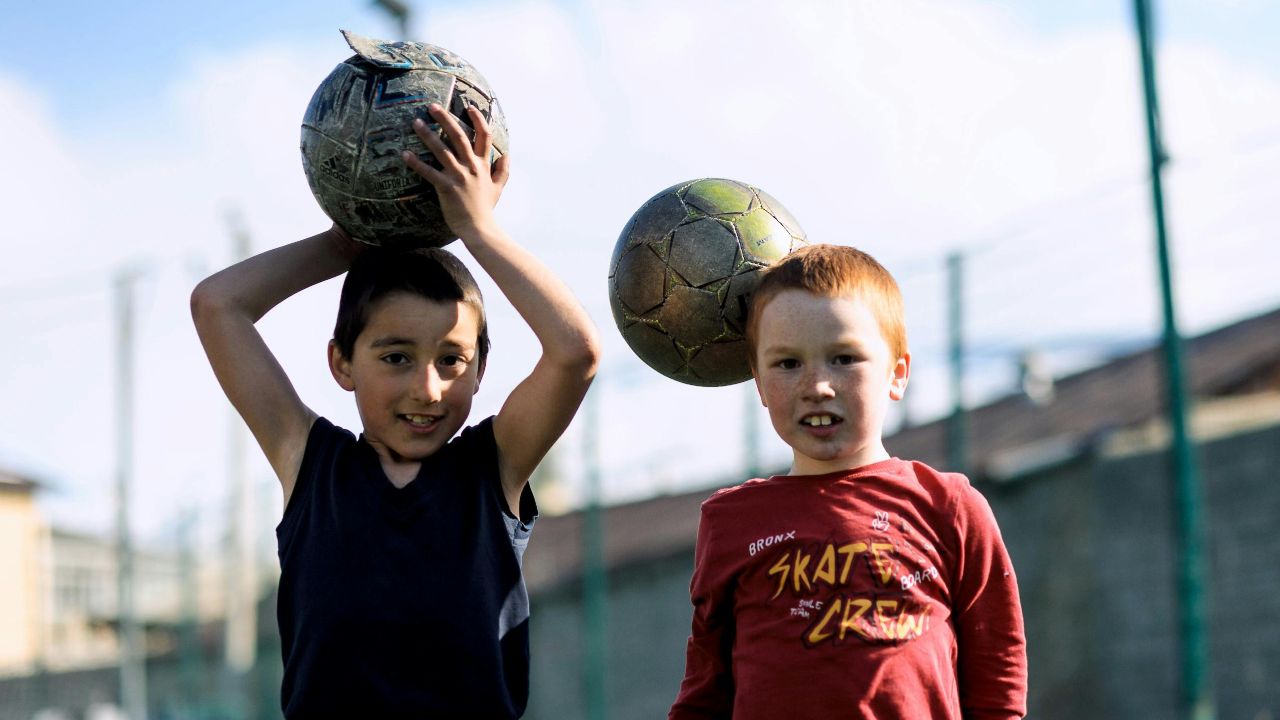Choosing the right soccer ball size for your child can significantly impact their development and enjoyment of the game. With so many options available, it’s crucial to understand which size is best suited for an 8-year-old. In this article, we’ll explore everything you need to know about selecting the perfect soccer ball size for your young athlete.
Understanding Soccer Ball Sizes
Soccer balls come in various sizes, typically ranging from size 1 to size 5. The size of the soccer ball is determined by its circumference and weight. Each size is intended for different age groups and levels of play. Here’s a quick breakdown:
- Size 1: Mini ball, used for skills training and recreational play.
- Size 2: Also for skills training and recreational play, slightly larger than size 1.
- Size 3: Suitable for children aged 8 and under.
- Size 4: Designed for children aged 8 to 12.
- Size 5: Standard size for players aged 12 and up, including adults.
Why Soccer Ball Size Matters
The size of the soccer ball is more than just a number. It plays a crucial role in how children learn and develop their soccer skills. Using the correct ball size helps with proper technique, enhances ball control, and reduces the risk of injury. A ball that’s too large or too heavy can be difficult for a child to handle, leading to frustration and potentially hindering their progress.
Recommended Soccer Ball Size for an 8 Year Old
For an 8-year-old, the ideal soccer ball size is a size 3 or size 4. Here’s a closer look at each option:
- Size 3 Soccer Ball: This is the smallest official size and is typically used for younger children. It has a circumference of 23-24 inches and weighs about 11-12 ounces.
- Size 4 Soccer Ball: Slightly larger, this ball is used for older children and has a circumference of 25-26 inches, weighing around 12-14 ounces.
Features of a Size 3 Soccer Ball
Dimensions and Weight: A size 3 soccer ball has a circumference of 23-24 inches and weighs between 11-12 ounces.
Best Uses: This size is perfect for children aged 8 and under. It is ideal for developing basic skills such as dribbling, passing, and shooting due to its manageable size and weight.
Features of a Size 4 Soccer Ball
Dimensions and Weight: A size 4 soccer ball measures 25-26 inches in circumference and weighs 12-14 ounces.
Best Uses: Recommended for children aged 8 to 12, this size helps transition young players to the standard size 5 ball used in higher levels of play. It’s great for skill development and slightly more advanced training.
Benefits of Using the Correct Soccer Ball Size
Improved Ball Control: Using a ball that’s appropriately sized for a child’s age and physical development enhances their ability to control the ball effectively.
Enhanced Learning Experience: The right size ball helps young players learn proper techniques more easily and enjoy the game more fully.
Better Safety: A correctly sized ball reduces the risk of injuries associated with handling a ball that is too heavy or large for a child’s size.
How to Choose the Right Soccer Ball
Checking League Requirements: Always check with your child’s soccer league for any specific size requirements. Some leagues may have rules about which size ball to use for different age groups.
Considering the Child’s Development: Take into account your child’s physical development and skill level. If they are more advanced for their age, a size 4 ball might be more suitable even if they are only 8 years old.
Trying Out Different Sizes: If possible, have your child try out different sizes to see which one they are most comfortable with. This can be a fun and interactive way to find the best fit.
Materials and Construction of Soccer Balls
Common Materials Used: Soccer balls are typically made from synthetic leather, polyurethane (PU), polyvinyl chloride (PVC), or rubber. Higher-quality balls usually use PU for a softer feel and better performance.
How Material Affects Performance: The material affects the ball’s durability, touch, and control. PU balls offer better touch and control, making them ideal for match play, while PVC balls are more durable and suitable for training.
Inflation and Maintenance of Soccer Balls
Proper Inflation Guidelines: Maintaining the correct air pressure is vital for optimal performance. The recommended pressure is usually printed near the ball’s valve and typically ranges from 6-8 psi.
Tips for Maintaining a Soccer Ball: Regularly check and maintain the ball’s pressure, clean it after use, and store it in a cool, dry place to extend its lifespan.
Popular Brands for Soccer Balls
Overview of Top Brands: Some of the leading soccer ball brands include Adidas, Nike, Puma, and Select. These brands are known for their quality, durability, and performance.
Why Brand Matters: A reputable brand often ensures better quality control and materials, which can enhance the playing experience and longevity of the ball.
Cost Considerations
Price Range for Different Sizes: Soccer ball prices can vary widely. Size 3 balls typically range from $10 to $30, while size 4 balls can range from $15 to $50, depending on the brand and material.
Balancing Cost and Quality: While it might be tempting to go for the cheapest option, investing in a slightly more expensive ball from a reputable brand can pay off in terms of durability and performance.
Where to Buy Soccer Balls
Considering all the qualities of brands to buy soccer balls from, you will want to explore Soccer Max Pro’s Soccer Balls.
Conclusion
Selecting the right soccer ball size for your 8-year-old is crucial for their development and enjoyment of the game. A size 3 or size 4 ball is generally recommended, with size 4 being a great option for those transitioning to more advanced play. Remember to consider the materials, brand, and proper maintenance to ensure you get the best ball for your young athlete.


